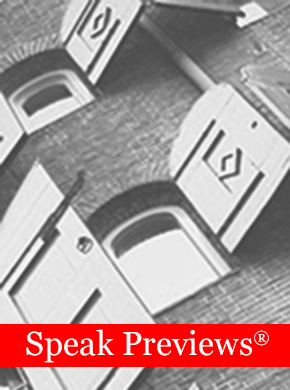A presentation is a timed performance, one that rarely allows time for waste. A speaker addresses an audience to fulfill a purpose—focusing on messages and her support for them, on the pace and strength of her delivery, on establishing credibility and an appropriate tone. Add to those tasks the effective use of visuals. Perhaps there is no time to waste.
Yet an agenda slide often wastes time, communicating little of value. The moment a slide boldly titled AGENDA appears on the screen at the start of a presentation, many listeners begin to tune out. Reading a list of topics that are to be covered is just not engaging—and it's even less compelling to hear the speaker go through the agenda topic by topic.
The beginning of a presentation is one of the times that audience attention is at its highest (the other is near the end). So it's important to open and close strongly, not with the whimper of an agenda slide.
At times, presenting your agenda to listeners may be helpful. If your presentation is complex or long, such a slide may indeed help audience members see the path you are taking.
But don't spend precious time on a list of topics.
Instead, headline, assert, speak from a point. Thus rather than an agenda item labeled "Background," send a strong message: "Diagnosis increased 50% since 1990." Convert each item into the message you will construct during that portion of the presentation. That is your agenda, so use it to deliver, connect, and emphasize messages.
And how to design the slide? A graphic representation will be more effective than a bulleted list. Perhaps boxes or circles with arrows pointing from one item to the next, a sort of map. Or a timeline that shows the progression of your messages and the proportion of time to be spent on each. Aim for at-a-glance comprehension.
No matter how well it's designed, don't let the agenda slide be the subject of your opening. Concentrate first on a grabber, a story, anecdote, fact, visual, or rhetorical device that focuses the audience immediately on you and your subject. Secure audience attention first.
Then share your agenda. Keep your remarks brief, almost a summary of your messages, but try to avoid the "Tell 'em" formula.
Speakers sometimes choose to use an agenda slide throughout a presentation to help the audience keep track of messages, connections, and time. When sharing an ongoing agenda, they use checkmarks to indicate past parts or highlight the current part in white and the past and future parts in gray. Keep it simple, always, simple and clear. The agenda slide can have a place in the presentation of a complex idea or process. It can help audiences follow, navigate, and understand intricacies. But make it persuasive and emphatic, both a preview and a reminder of your messages. Then it's time well-spent.



